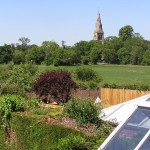The poet Swinburne was born in London and considered himself a Northumbrian, but he spent most of his youth at East Dene, his parents’ house at Bonchurch on the Isle of Wight. A strange little runt of a man, Swinburne had picked up his algolagnia (‘pain lust’) at Eton, along with his fluency in the classics, though his fondest memories of school were of ‘swimming lessons and play in the Thames’. Etonians of the time practically invented modern recreational swimming, though Swinburne took a more masochistic pleasure in immersion. This was evident at an early age, when his no-nonsense father (an Admiral) used to toss him into the waves in Monk’s Bay below the house. Swinburne said that he would emerge ‘shouting and laughing with delight’.
Swinburne never visited Greece, though, like Keats, he wrote as if he were a Greek. The landscape around Bonchurch is, in fact, England’s nearest equivalent to the beauties of Greece (see the view below), and Swinburne seems instinctively to have known this, specifically comparing the two places in ‘Triumph of Gloriana’. Bonchurch is close to my own boyhood home, and I often walk there, approaching it from the densely-wooded Landslip – a place where elves might easily lurk under giant rocks and fallen boughs, or Pan and Bacchus play hide and seek with the Maenad and the Bassarid:
‘The laughing leaves of the trees divide,
And screen from seeing and leave in sight
The god pursuing, the maiden hid.’
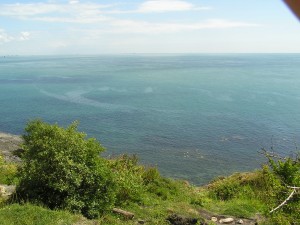
Having paid my respects at the boundary of East Dene (now some sort of residential educational centre), I descend the steep path to the beach. The waters of Monk’s Bay are more placid than they used to be, owing to the construction (within the last ten years) of some major sea defences. Swinburne would have been displeased. He liked his sea to be rough, like his lovers. Turning northwards along the coast, I soon reach a deserted beach where, truly, I have never seen another soul. Perhaps it is just too much effort for people to clamber with their paraphernalia over tricky rocks, though easy for me, familiar with these shores, fired up by my walk and unencumbered. At least once a year, I strip off and swim.
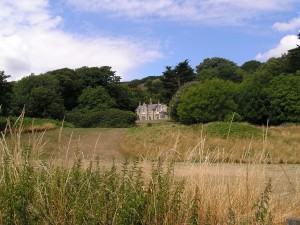
Swinburne would presumably have taken this route to Culver Cliff, the dangerous, sheer, white face of which he famously scaled at the age of 17, to prove his manhood. He wrote that he had had to break off the attempt (which verged on the suicidal) to gather his courage, by bathing in the sea at the foot of the cliff. He must have liked my deserted beach, too. The risk of being pounded by the waves, and scraped on rocks which are just below the surface at low tide, would have had him squealing with delight.
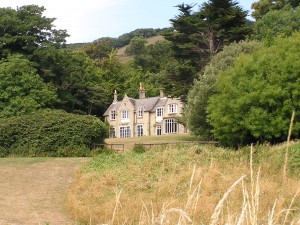
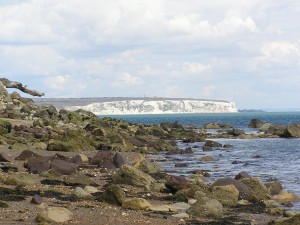
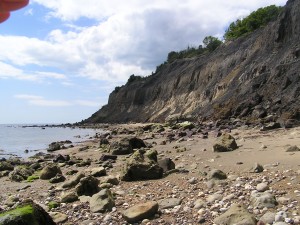
East Dene, Culver Cliff and the beach below the Landslip, Bonchurch
